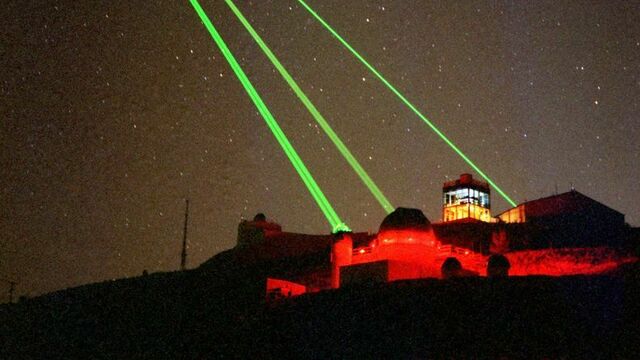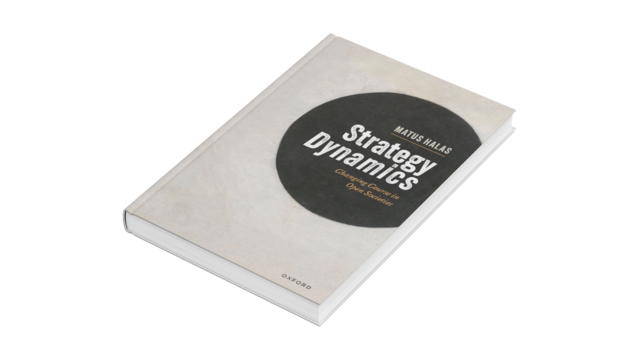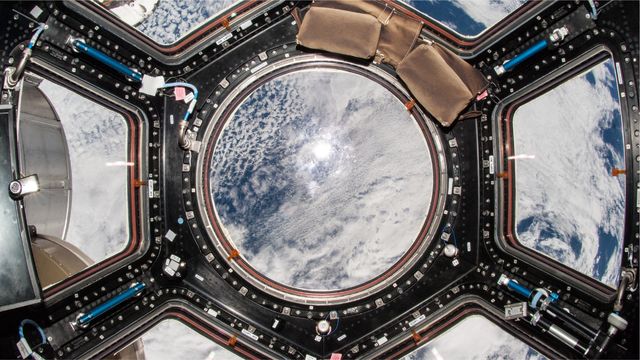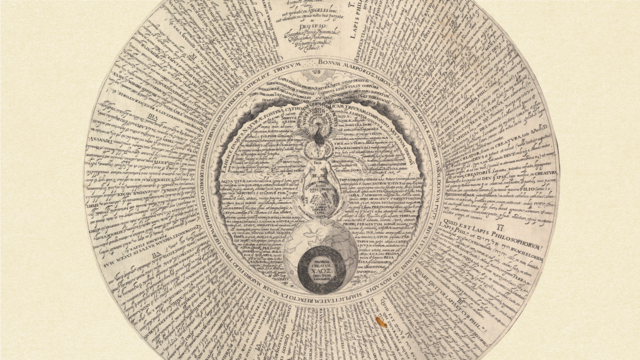Building Planetary Defense Governance: A Proposal For Multigenerational, Financially Sustainable And Scientifically Beneficial Planetary Defense
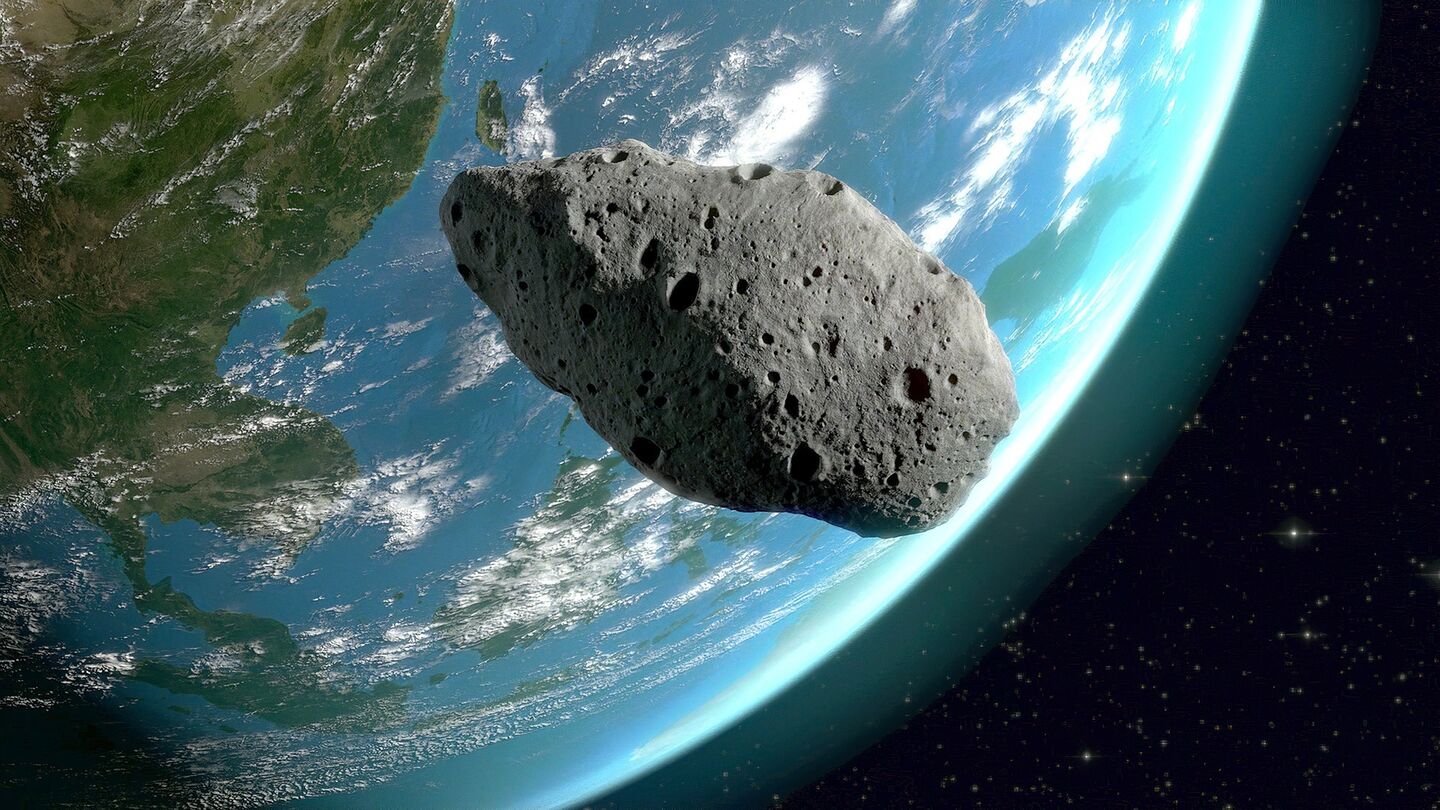
paper
Planetary defense is a well-established scientific program which is currently reaching its milestone through a demonstration of a kinetic impactor deflection method by the DART space craft. Besides this deflection demonstration mission, planetary defense depends on astronomical observations. However, the threat of being hit by an asteroid is a low probability but high impact natural phenomenon which requires a multigenerational, financially sustainable, and scientifically beneficial program.
While the scientists might be interested in discovering asteroids, they might not be interested in following up on them for generations; nor are they experts in building global planetary defense governance. Moreover, planetary defense capabilities, which are successively being developed, will sooner or later be considered as dual-use technologies. Given this dynamic, and to continue the development of planetary defense capabilities, not only spacefaring states need a regime under which they can act if others are
under threat.
This paper argues that given the milestone of DART and the follow-up HERA mission, the time has come to open a serious discussion over establishing global planetary defense governance in the shape of a planetary defense security community following multilateral principles similar to those of NATO but in a significantly smaller form. Small states have capacities to contribute to such a community (the principle of
diffuse responsibility); they do it already in the current scientific planetary defense programs but in case of an imminent threat non-space-faring states need assurance that the existing planetary defense capabilities will be used for their benefit (the principle of indivisibility) and not misused. The answer is to establish a security community. These communities have proved to be surprisingly successful in the past, and the current planetary defense scientific community has almost everything that is needed to begin the discussions over the governance model of how we will defend Earth as humankind if scientists can already demonstrate it.
Introduction
Planetary defense might sound like science fiction. In fact, it is a well-developed international scientific effort. An ongoing space mission to hit an asteroid with an objective to demonstrate the possibilities of a kinetic impactor defending the Earth from future asteroids on the collision course, is currently underway. This double mission by NASA and ESA for sending spacecraft called DART (the spacecraft that is to hit the asteroid) and HERA (the spacecraft that is to analyze the consequences) into space has been struggling to receive enough funding from ESA due to one ministerial budget rejection effectively narrowing down the scientific mission to the absolute minimum. It neither triggered significant political interest nor did it have any visible follow up. Two key problems can be recognized here – a lack of global governance and a risk of fading out of the expertise. In the first case, the current situation openly leaves weak non-space-faring countries behind, while the Outer Space Treaty requires exactly the opposite – cooperation on a global scale regardless of the level of economic and scientific development. The second problem is that the current planetary defense capabilities developed by scientists and, if successful, demonstrated on this double mission, could fade out without a clear and concise political action to establish a sustainable planetary defense capability for foreseeable generations. The solution to both problems is to establish a security community based on multilateral principles that could cooperatively develop a planetary defense infrastructure that would
provide security to all countries without exception. Such a security community would not threaten any other states, and it would share its scientific knowledge and technological ingenuity among its members, effectively making high-end industries thrive while binding members of the community to mutually deliver security from asteroids for the foreseeable future. Moreover, it would reflect exactly the cosmopolitan Outer Space Treaty legacy and our ethical responsibility to the biosphere in general because we know the problem and we have the means to avert it.
Planetary Defense: Between the Threat Perception and Cosmopolitan Responsibility
The Illusion of a Catastrophic Threat and the Limits of Observational Science
We know that an asteroid capable of causing an extinction event on a global scale (e.g. the 10km wide asteroid that ended the era of dinosaurs) will almost certainly (98%) not hit Earth during the time of the next several human generations. We possess this knowledge thanks to astronomical observations; however, we also know that smaller asteroids are hitting the Earth regularly. By far, we have not found them all in the Solar System, nor do we have the means to react to such asteroids in mere days or hours, which some asteroids, especially those coming from the Sun, require.
Apophis, a 370m wide asteroid, will miss the Earth at a smaller distance than our distance from the communication satellites on the geosynchronous orbit in 2029, and then it will come back in 2036, 2051, 2066 and so on. The asteroid Bennu, which is 490m wide, is going to encounter the Earth at half lunar distance in 2135. These asteroids can cause a continentwide disaster. Smaller asteroids capable of causing local disasters are visiting the Earth regularly, literally every month; the Minor Planet Center reports asteroids missing the Earth at lunar distances. We do not know how many we are still missing. When it comes
to asteroids bigger than 140m, statistically NASA expects that about 60% of them remain to be found and that we will be aware of 80% of them by 2032. Their total number is estimated to be 25,000.
The first observation problem is to follow asteroids for decades because when we find asteroids bigger than 140m, we need to follow them continuously as some irregularities in the Solar System such as gravitational fluctuations can change their orbits. Astronomers are mainly interested in science, so they might not be in the administration of following found asteroids for generations. Therefore, a new public institution should be established to conduct this post-scientific administration work. The International Asteroid Warning Network (IAWN) under the UN COPUOS could evolve to serve this purpose if it is funded properly.
The second problem is that we cannot see asteroids coming from the Sun, which was the case of the Chelyabinsk meteor in 2013, which injured 1500 people. Similar size asteroids (~20m) hit Earth statistically once every decade, and we know about 1–3% of them and can count up to millions of asteroids, but nevertheless, three-quarters of the Earth’s surface are ocean. Therefore, the threat is not imminent but certain in a longer time scale, making planetary defense an intergenerational security agenda. This problem can be solved by two approaches. The first is having perfect knowledge about the orbits of all asteroids down to 20m in diameter but that means monitoring maybe even millions of asteroids (when we find them all), which would require a dedicated asteroid observation infrastructure (telescopes, human resources, computational power). The second approach is having a standby planetary defense infrastructure ready to act within days or hours (standby rockets and spacecraft, human resources).
Therefore, the core problem is not an extinction event asteroid but smaller asteroids coming closer to Earth with the power to cause events like Chelyabinsk once per decade and the fact that we do not possess a standby capability and a governance system that would enable us to act quickly. We need a stable multigenerational observation program and standby spacecraft for possible deflection missions to create a state of global security on an intergenerational time scale.
Planetary Defense Is Not About the Threat, But Political Responsibility
Planetary defense is differently perceived by the public, which links planetary defense to science fiction movies, by governments, which tend to understand all scientific planetary defense efforts as deployments of dual-use technologies, and by scientists, who understand their mission as important and responsible science saving humanity from a possible catastrophe.
In fact, DART and HERA will not tell us whether we can deflect an asteroid (we know we can) but will provide us with scientific data that will enable us to design future missions more precisely, so it is still clearly a scientific mission. However, the planetary defense needs to move from scientific missions to a state of serious global planetary defense governance. This can be achieved if the ‘scientific community’ – the planetary defense community – is provided with ardent diplomats with the objective to develop a multilateral ‘security community’ – the planetary defense security community – along with a related global security regime that would ensure that planetary defense policy serves all.
The times beginning with the launch of the DART mission in October 2021 with its planned impact in October 2022, and also including the following launch of HERA in 2024 and its orbiting the asteroid in late 2026, are a great period of opportunity to talk to governments about planetary defense because the existence of the mission itself will rule out any arguments about planetary defense being nonsense or fiction. While the
mission will demonstrate that the scientists developed the means to deflect an asteroid, the central argument of the planetary defense community must not only be capability, but also responsibility and pragmatic economic outcomes. Responsibility has plentiful meanings but the main one (a bit simplified) is the moral obligation to act in relation to given knowledge.
Scientists are deepening their knowledge about asteroids; they are demonstrating the means to deflect them in practical space missions. The knowledge about asteroids combined with the existence of planetary defense technology constitutes a moral responsibility for political actors. Now it is their turn to demonstrate that they can imagine and mobilize a responsible foreign policy.
Cosmopolitan Responsibility as a Realist and Pragmatic National Policy
One scientist representing the planetary defense community at the International Astronautics Congress 2021 in Dubai openly said that the current situation leaves nonspace-faring states dependent on a phone call to NASA to ask whether they will help them. Leaving planetary defense to a single powerful space faring state is definitely not the optimal governance model. Most people would consider a cosmopolitan approach as a dream because cosmopolitanism evokes thoughts of a global government. This is not necessarily true as some scholars recently came up with the idea of a responsible cosmopolitan state exactly to focus on the current political reality in a world consisting of states coordinated in international communities and reiterating terms such as global village. Promoting multilateralism in an arrangement of a planetary defense security community could be considered as a well-thought-out responsible cosmopolitan state foreign policy.
A security community, a concept that was introduced in 1957 by Karl Deutsch, is a group of political entities that came to an agreement that common problems must be solved by processes of peaceful means through institutional procedures to overcome possible large-scale wars. Security communities are also bound by mutual sympathy, trust and common interest. The members of a security community are mutually responsible and obliged to act in case of a threat; in the past, security communities proved to be very effective in delivering security to the citizens of multiple countries on the basis of the multilateral principles of indivisibility and diffuse reciprocity.
The principle of indivisibility provides the members with equal assurance of security regardless of their contribution. NATO is a case in point with the Article 5 of the Washington Treaty obliging all its members to defend an attacked member, while they are not obliged to contribute proportionately in comparison to others but relatively based on their economic performance (2% of GDP). And the principle of diffuse reciprocity is fulfilled by the willingness of countries to deliver their capabilities in missions such as HERA.
It will be hard to build a global interest in planetary defense when no extinction event asteroids are on a course to hit Earth, but the relations can be firstly established on the basis of a scientific and technological cooperation stimulating new industries, from which a global responsibility would emanate naturally. The former is a policy that current small space faring countries promote the most, especially when it comes to the motivation of small European countries to contribute to missions such as HERA through their participation in ESA. The latter policy is motivated by global and intergenerational responsibility; this
motivation is rare but crucial. Benefits from high-end industrial cooperation are good for silencing politically irresponsible figures limited to strict economic and pragmatic interests, while it is necessary to promote, support and nourish the next steps toward the model of a security community not only by organizing science and technology development, but also by planetary defense governance through global, multilateral and inclusive means. Because having and preserving a dedicated planetary defense infrastructure on a national basis is irrational financially and technologically, countries could be willing to establish a planetary defense security community as it will bring scientific cooperation, technological innovation, high-end industries, national security and, finally, naturally global security, as planetary
defense is inherently a global agenda.
Therefore, the initial input motivation of states to participate in such a community is threefold: the three components are scientific and industrial participation and national security; later, if a security community is established, the output motivation could become a foreign policy in responsible cosmopolitan terms following the Outer Space Treaty (OST), which would demonstrate that the members care about humanity as a whole actually fulfilling the legacy of the OST.
Political interest in participation in planetary defense as a responsible mission for humanity is not a common foreign policy of most countries. The USA has its own planetary defense strategy and agency, and it is the only country in the world to have these institutions. However, some countries already understand planetary defense from the perspective of responsibility. We found out that 20 out of 25 analyzed countries that mention planetary defense or space situational awareness related to planetary defense in their space strategies consider their participation in the efforts to be worth the resulting global security despite the fact that 23 out of the 25 mentioned also national security as a planetary defense priority. However, it means that only two countries see planetary defense as a solely national security issue without considering global security at all and another two did not link security to planetary defense at all. Only four countries consider planetary defense as an opportunity to raise their own national exceptionalism and ambitions to lead the world in the planetary defense efforts (the USA, China, Turkey and Italy). However, all the countries understand the need for international cooperation in planetary defense. This is a good beginning for our argument.
The emerging challenge will be the mere existence of any planetary defense capability as it can be considered as holding dual-use technologies. Misunderstandings can be caused not only by holding such technologies but also by a refusal of assistance in case of an imminent threat, a flawed, accidental deflection unintentionally hitting another state or any other version of a failed mission. These situations are well simulated in the planetary defense community at its biannual conferences but without a reflection from the policy stakeholders. These problems can be addressed by the principle of indivisibility because it will deliver coordination, shared capabilities and mutual oversight of sensitive technologies between members. The principle binds states in a community that declares its willingness and readiness to contribute to the security of its members, which reciprocally return confidence. It can begin on the scientific and technological cooperation, effectively securing funds to keep the current scientific efforts growing while keeping the sensitive standby technology under scrutiny.
Establishing a planetary defense security community would bring a lot of benefits. Firstly, industries of the member states could thrive and move towards space through a growing agenda that must have a multigenerational time scale while the principal effect would be the assurances that the community will act in case of an asteroid heading towards a collision with Earth. Secondly, the existence of such a security community will preserve and deepen the current expertise and ensure the continuous development of various planetary defense technologies, standby capacities and their monitoring and oversight. Thirdly, all
participating states will be considered as states with a cosmopolitan responsibility in mind if they commit themselves to defending all countries regardless of whether they are members of the community because the asteroid will not hit community members but Earth. It is a natural phenomenon that does not distinguish between states. Fourthly, the economic and security-pragmatic reasons of the security community membership can bring a potential shift in the perspective of the security – from the national to the global. In fact, climate change is doing this very effectively.
The UN COPUOS SMPAG (Space Mission Planning Advisory Group), which is responsible for designing possible planetary defense missions, limits its social scientific efforts to the legal analysis of the international (space) law related to planetary defense. The SMPAG should enlarge its scope of interest by delivering ideas on how planetary defense should be governed, not only on how it can be governed in accordance with the current international law. The SMPAG’s legal report mentions a possible “ad-hoc decision-making body”; however,
it does not elaborate on it in detail. Establishing a planetary defense security community does not necessarily need to be a huge task as a NATO. Treaty can be negotiated between several interested countries currently participating in DART and HERA, and if the treaty reflects the principles of the Outer Space Treaty and translates them into security relations with clear benefits in scientific and industrial cooperation, the task for the SMPAG can prove to be surprisingly simple. However, this move requires a political will to carry it out.
Policy Recommendations
→ EXPERTISE: Astronomical observations will require a dedicated institution (preferably based on IAWN) with stable funding to follow found asteroids and preserve the current growing knowledge and expertise in the foreseeable future. This shift from scientific research to public service is an opportunity to establish the institutional basis of future planetary defense governance.
→ CAPABILITIES: Planetary defense is currently perceived as scientific efforts with some benefits for high-end national industries. This dynamic should be preserved as an economic and pragmatic motivation that can ensure its continuation in future missions, avoid a possible disappearance of the current expertise and be the
basis for a future planetary defense security community.
→ SECURITY: Fulfilling the objectives of both of the points above should be surrounded by an idea of establishing a planetary defense security community based on the current planetary defense scientific community (therefore based on the SMPAG) that would follow multilateral principles and carve out a globally
responsible strategy in the coming years to preserve the scientific expertise, support the high-end industry and ensure security for all states.
→ SUCCESS STORY: The scientific community should use the success of the double mission DART and HERA to fulfill bigger ambitions such as establishing the proposed planetary defense security community.

